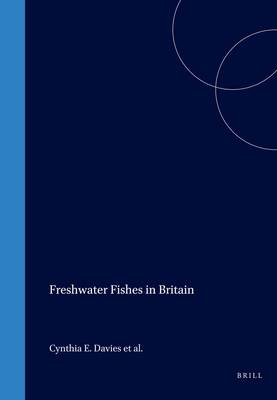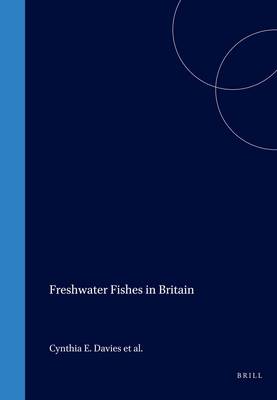
- Retrait gratuit dans votre magasin Club
- 7.000.000 titres dans notre catalogue
- Payer en toute sécurité
- Toujours un magasin près de chez vous
- Retrait gratuit dans votre magasin Club
- 7.000.0000 titres dans notre catalogue
- Payer en toute sécurité
- Toujours un magasin près de chez vous
Freshwater Fishes in Britain
Livre relié | Anglais
90,45 €
+ 180 points
Description
For most British natural historians, there is one vertebrate order that could well be said to be "out of sight, out of mind." This is our freshwater fishes, familiar principally only to anglers, those concerned with managing rivers and other waterbodies, and a few research scientists. The results of this project, which ran from 1998-2002, are published here in the form of comprehensive 10km square dot-distribution maps for the 54 species inhabiting England, Scotland, Wales, the Channel Islands and the Isle of Man. These indicate the vulnerability of several of our native British species. Following a wide-ranging introductory chapter, and further chapters on distribution and the history of the project, Chapter 4 comprises the individual species accounts under the headings: Description; Biology and behaviour; Habitat; Distribution in Britain; World distribution; Status; Hybrids and related species; and a final section of the relationship of each species with Man. In addition to a map, each species is illustrated by fine lithographs taken from Francis Day's famous 19th century work, skilfully supplemented by Michael J. Roberts for those species unknown to Day. Chapter 5 covers conservation and management of freshwater fishes and is followed by four Appendices relating to (1) Publications; (2 & 3) Legislation; and (4) Selected websites relating to environmental protection, biodiversity information and fish conservation. The book concludes with a Glossary; a comprehensive Bibliography; and an Index.
In his Foreword, Sir John Burnett, Chairman of the National Biodiversity Network Trust, commends this books as "a unique reliable source of clear and comprehensive information that is pleasing both to the mind and to the eyes" and expresses the hope that "it will lead to ... the more effective conservation of this 'alien race' in our midst."
A joint project of the Environment Agency, the Centre for Ecology and Hydrology and the Joint Nature Conservation Committee; written by a team of 38 authors and compiled and edited by Cynthia Davies (CEH), Jonathan Shelley (EA), Paul Harding (Biological Records Centre, CEH), Ian McLean (JNCC), Ross Gardiner (Fisheries Research Services) and Graeme Peirson (EA).
In his Foreword, Sir John Burnett, Chairman of the National Biodiversity Network Trust, commends this books as "a unique reliable source of clear and comprehensive information that is pleasing both to the mind and to the eyes" and expresses the hope that "it will lead to ... the more effective conservation of this 'alien race' in our midst."
A joint project of the Environment Agency, the Centre for Ecology and Hydrology and the Joint Nature Conservation Committee; written by a team of 38 authors and compiled and edited by Cynthia Davies (CEH), Jonathan Shelley (EA), Paul Harding (Biological Records Centre, CEH), Ian McLean (JNCC), Ross Gardiner (Fisheries Research Services) and Graeme Peirson (EA).
Spécifications
Parties prenantes
- Editeur:
Contenu
- Nombre de pages :
- 176
- Langue:
- Anglais
Caractéristiques
- EAN:
- 9780946589760
- Date de parution :
- 01-01-04
- Format:
- Livre relié
- Format numérique:
- Genaaid
- Poids :
- 561 g

Les avis
Nous publions uniquement les avis qui respectent les conditions requises. Consultez nos conditions pour les avis.





